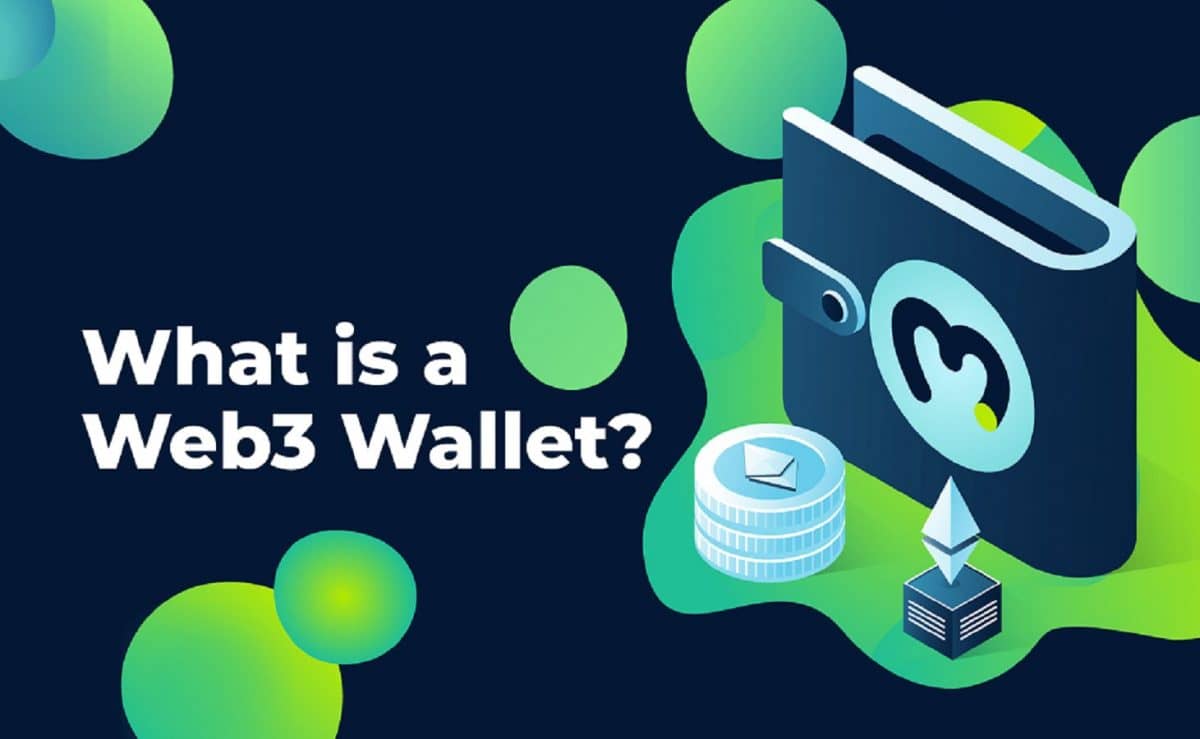
What is a Web3 wallet?
Web3 wallets have gained immense prominence within the realm of cryptocurrencies and blockchain technology. They serve as indispensable instruments for individuals venturing into the decentralized landscape of Web3. In this all-encompassing guide, we shall embark on an in-depth exploration of Web3 wallets, delving into their fundamental nature, dissecting their intricate mechanics, and elucidating their paramount importance in the ever-evolving era of blockchain technology and decentralized applications.
In this article, we will explore Web3 wallets, their key features, the different types of these wallets, and their diverse range of applications. So, stay with us until the end to gain a comprehensive understanding of Web3 wallets.
What is a web3 wallet?
A Web3 wallet, short for "Web3 blockchain wallet," is an advanced digital instrument meticulously crafted to empower users in effectively handling, safeguarding, and engaging with cryptocurrencies, tokens, and decentralized applications (dApps) that thrive within the dynamic realm of blockchain technology. Unlike their conventional counterparts, which usually operate under the custodial umbrella of centralized entities, Web3 wallets distinctly embrace a non-custodial ethos, thereby bestowing upon users an unparalleled degree of autonomy over their valuable assets and sensitive information. These cutting-edge wallets are strategically designed to seamlessly interface with the ever-evolving landscape of Web3 technologies, serving as an indispensable conduit that bridges the chasm between end-users and the multifaceted universe of decentralized applications and blockchain networks.
Key Features of Web3 Wallets
Web3 wallets offer a range of features that distinguish them from traditional wallets:
- Decentralization: Web3 wallets are non-custodial, meaning users have full control of their private keys and funds. There is no reliance on a central authority, making them resistant to censorship and hacking.
- Compatibility: These wallets support various blockchain networks, enabling users to manage multiple cryptocurrencies and tokens in a single interface. Ethereum, Binance Smart Chain, and Polkadot are among the popular blockchains supported.
- dApp Integration: Web3 wallets seamlessly integrate with decentralized applications, enabling users to interact with services like decentralized exchanges (DEXs), NFT marketplaces, and DeFi platforms directly from their wallets.
- Enhanced Security: These wallets prioritize security through features like hardware wallet integration, multi-signature authentication, and passphrase protection, ensuring the safety of users' assets.
- User-Friendly Interfaces: Many Web3 wallets offer intuitive and user-friendly interfaces to make it easier for both newcomers and experienced users to navigate the decentralized ecosystem.
Types of Web3 Wallets
There are various types of Web3 wallets, catering to different preferences and security needs:
- Browser Extensions: These are wallet extensions that integrate with popular web browsers like MetaMask for Ethereum or Polkadot.js for Polkadot. They are convenient for users who frequently interact with dApps through their web browsers.
- Mobile Wallets: Mobile apps like Trust Wallet and Coinbase Wallet offer users the flexibility to manage their digital assets on the go, making them suitable for everyday use.
- Hardware Wallets: Hardware wallets such as Ledger Nano S and Trezor provide the highest level of security by storing private keys offline. They are ideal for long-term storage of cryptocurrencies.
- Software Wallets: Software wallets are desktop applications like Exodus and Atomic Wallet, offering a balance between convenience and security for users.
- Paper Wallets: Paper wallets involve generating a physical paper copy of your private keys, which is considered one of the most secure options for storing cryptocurrencies offline.
How web3 wallets work?
Web3 wallets operate through a sophisticated process that involves the creation and management of cryptographic key pairs. These pairs consist of a public key (also known as an address) and a private key. The private key is a highly sensitive piece of information that must be kept securely, as it serves two crucial purposes: signing transactions and granting access to the user's digital funds. In contrast, the public key is intended for sharing with others, allowing it to function as a public address for receiving cryptocurrencies.
When users engage with decentralized applications (dApps) or initiate cryptocurrency transactions, their Web3 wallet springs into action by utilizing the private key. This private key acts as a digital signature, providing cryptographic proof of ownership and validating the user's authority over the transaction. The signature generated by the private key is then transmitted to the blockchain network, where it undergoes a meticulous verification process carried out by network nodes. This verification step ensures the transaction's authenticity, effectively preventing unauthorized or fraudulent activity from taking place on the blockchain.
Use Cases of Web3 Wallets
Web3 wallets are versatile tools with various use cases:
- Digital Asset Management: Users can store, send, and receive cryptocurrencies and tokens, managing their digital assets conveniently in one place.
- Decentralized Finance (DeFi): Web3 wallets enable users to participate in lending, borrowing, yield farming, and liquidity provision on DeFi platforms.
- Non-Fungible Tokens (NFTs): Users can buy, sell, and showcase NFTs in dedicated marketplaces directly from their Web3 wallets.
- Voting and Governance: Some Web3 wallets allow users to participate in blockchain-based governance decisions, giving them a voice in protocol upgrades and changes.
- Cross-Chain Interaction: With support for multiple blockchains, Web3 wallets facilitate cross-chain swaps and interoperability, enabling users to access assets on different networks.
Security Considerations for Web3 Wallets
Security is a paramount concern when dealing with Web3 wallets. Here are essential security precautions to safeguard your digital assets:
Backup Private Keys: Store and create secure backups of your private keys in multiple locations to prevent the risk of losing access to your funds.
Use Hardware Wallets: Consider utilizing hardware wallets for long-term cryptocurrency storage. These devices keep private keys offline, protecting them from online threats.
Beware of Phishing: Exercise caution against phishing attacks. Only interact with trusted dApps and websites, verify URLs, and employ browser extensions like MetaMask's phishing detector for added security.
Keep Software Updated: Ensure your wallet software and hardware wallet firmware are regularly updated to benefit from the latest security patches and enhancements. This practice strengthens the overall security of your Web3 wallet.
Conclusion
In summation, Web3 wallets serve as the pivotal gateway to the expansive realm of decentralization, endowing users with an unprecedented degree of control, fortified security, and unfettered access to a diverse array of blockchain-driven services. As the dynamic landscape of blockchain technology continues to evolve at an astonishing pace, Web3 wallets are destined to occupy a central role in shaping the future of digital finance, the flourishing ecosystem of decentralized applications (dApps), and the broader expanse of Web3 innovations.
With a firm grasp of their multifaceted features, an awareness of the diverse types available, and a vigilant approach to security considerations, users are poised to confidently traverse the intricate and transformative landscape of Web3. In doing so, they harness the full potential of these indispensable tools, positioning themselves at the forefront of a decentralized future that promises innovation, empowerment, and boundless possibilities.



